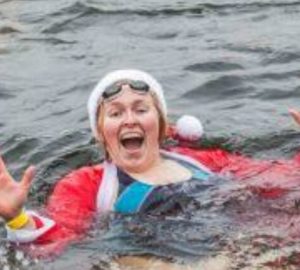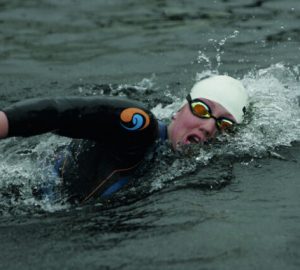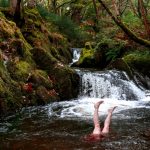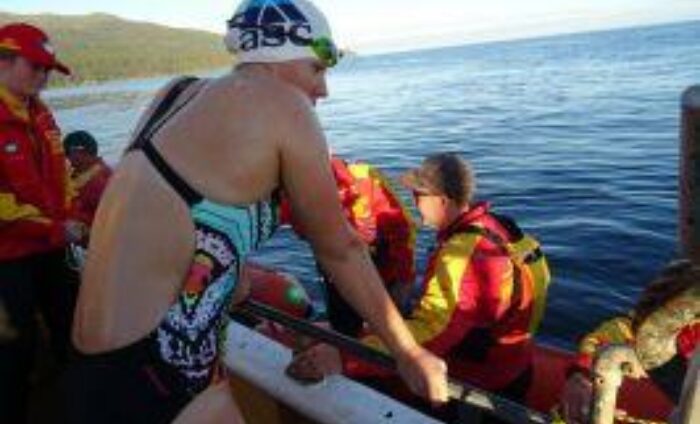
Interview: Chloe Harris
Chloe Harris, who moved to New Zealand from Suffolk when she was 16, has just set what is believed to be a new speed record for the swim between New Zealand’s South Island and Stewart Island. Being further south than the Cook Strait, the water is colder and often more treacherous (there have been a number of fatalities in the area) than the better known swim between New Zealand’s main islands. The strait is about 14km wide at its narrowest point.
H2Open: What was your primary motivation for wanting to swim Foveaux when Cook Strait and Taupo seem to be the two more popular big NZ swims?
Chloe: There was no single motivation for swimming the Foveaux. A little background: I had considered it in 2012 but being predominately a pool swimmer and surf swimmer it was a passing thought and never truly a possibility! I was also very unaware marathon swimming was even a ‘thing’ as such.
In 2015 I was asked to help out at an open water swimming group session as safety personnel with my background in surf lifesaving and coastguard safety is a strong point. Seeing how well the groups were run and realising how many people were starting to enjoy open water swimming it inspired me to explore the sport more than in the past. When looking up the swims, the pipeline thought was; I wanted to attempt the Foveaux or Cook. I think the thing that swayed me towards the Foveaux was only seven people had successfully completed it.
I was looking for a challenge and I had been a surf lifeguard at Oreti Surf Lifesaving Club for a number of years so I had a stronger connection with the Foveaux, than the Cook. The bonus was one of the people I used to train with down South was the last person who had swum it, Wayne Evans*, he was an incredibly inspiring man and knowing he was the last person that had swum it cemented the thought!
H2Open: Was it as tough as you thought it was going to be? What was the hardest thing about the swim?
Chloe: Having never swum anything more than 10km before and seeing as my last open water swim was back in 2009 in the UK I had no idea at the start of training how tough it would be.
There are always going to be issues with currents, surf, tides and weather but during the months of training leading up to the swim I started to get a picture of just how cold the temperatures were going to be and knew that for me the cold was going to be a tough part of the swim. The hardest part was definitely the last 5km when I was starting to tire and the water seemed to have a lot more cold patches; it really pushed me mentally to cope with that as well as the ‘claw’ hand I had for at least four hours.
In the first couple of hours I counted 26 jellyfish and in the first half of the swim there were a lot of big clumps of seaweed to navigate around. This certainly helped with distraction from the water temperature! I was also really surprised how incredibly clear the sea was.
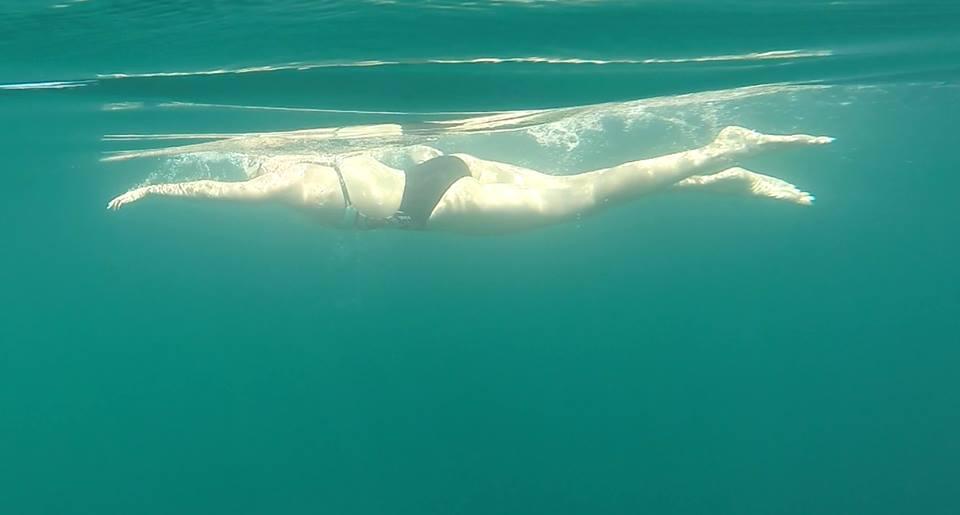
H2Open: We saw a recent story about people luring great whites closer to boats in New Zealand using bait balls as a tourist attraction, making the sharks more aggressive and prompting them to move closer to shore.
Was this on your mind at all during the swim?
Chloe: I saw the article you are referring to two days before my attempt! The thought did come up during my swim, a number of times. When swimming in waters well known for sharks it’s hard to avoid. However, the thought was kicked to the curb within seconds. It was something I had no control over so had to think positive and focus on the swim at hand.
H2Open: Did you expect or hope to set a new record?
Chloe: No. I think it’s very hard to directly compare open water swims, especially the Foveaux as it is known for its unpredictably. Changes in tides, weather and water temperature are all affecting factors. I hit the perfect storm of conditions, in the right way, with only two to three hours of chop, little wind and an incredibly knowledgeable support crew.
H2Open: Did you do much open water swimming (e.g. in the North Sea) before you left for New Zealand?
Chloe: I left Suffolk when I was 16 and open water swimming was only just starting to catch on, probably because it had just been made an Olympic event and more pool swimmers were getting involved.
I did swim in the sea in some fun races – the largest being about 400m! I also did a few open water events in lakes and at the National Rowing Centre.
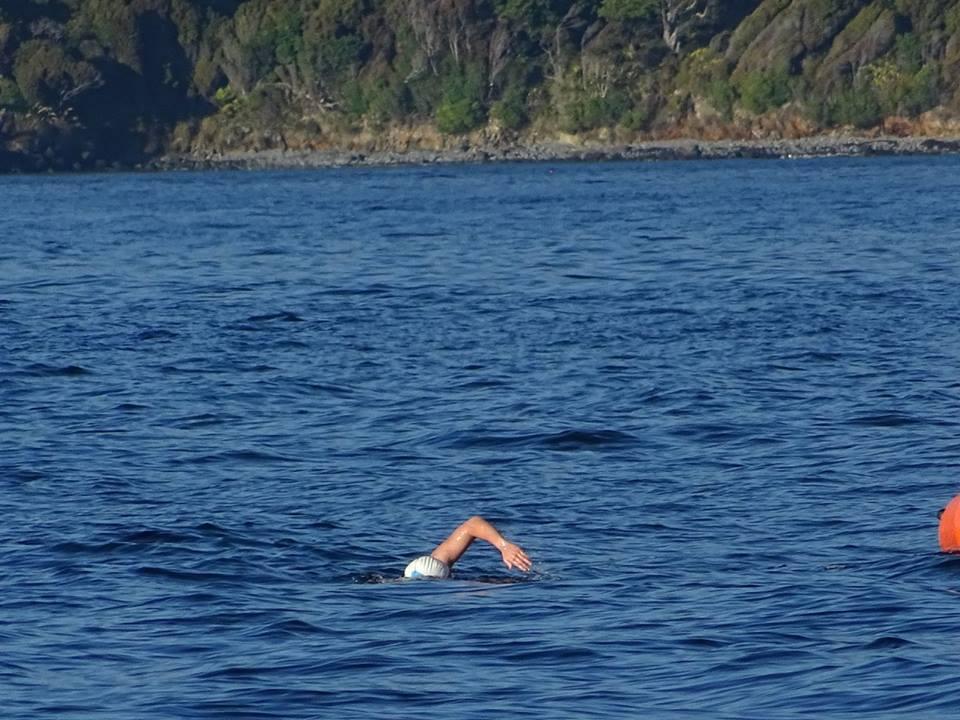
H2Open: Now that you have completed the swim how do you feel both mentally and physically?
Chloe: Both those feelings are very hard to explain. The build up to the swim was both mentally and physically intense, life became very full with a lot of information to deal with and organising the swim. Mentally there is a lot to process but also a sense of relaxation as the pressure is now off and there is time to let the swim sink in. When focused on a big swim for that period of time, the aftermath feeling is the need to regroup and figure out what to fill spare time with now! Physically, immediately I was obviously very cold and tired with a need to warm up and rest. The following days involved soreness very similar to a day after an intense workout… which is to be expected of course.
Can I also add that I really do have to say the swim and the speed of the crossing was a team effort? Prior to the day with the months of build up I had incredible training partners with their own open water marathon swim challenges. I received excellent advice and training swims from our local Christchurch open water specialist Dan Abel. Out on the water I had an incredible IRB crew, Scotty Roberts, Richard Harris and Thomas Grindell. Without every one of them the outcome could have been so different. That mentally helps you pull through the tough parts of the swim. The pilot Peter Leask (The Torea) had great knowledge of the Strait and was working constantly ensuring we got the best out of the tides and currents.
* Wayne Evans swam across the Foveaux Strait in 2013 but sadly died suddenly in January this year. He was just 49.





